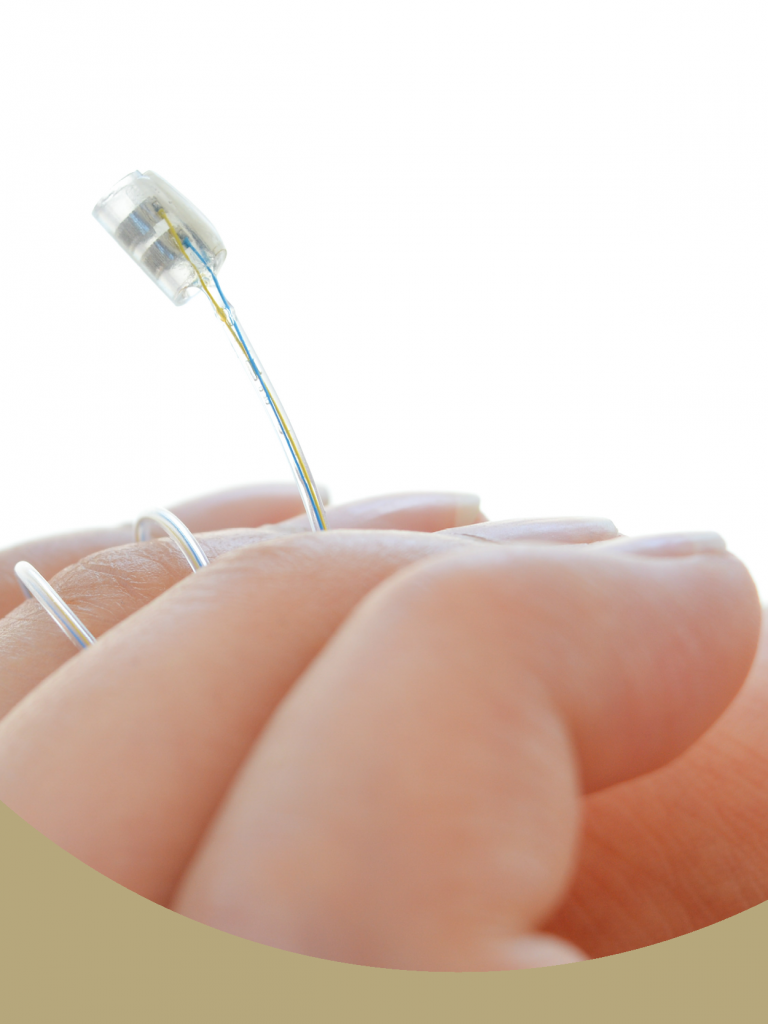The extent to which our everyday life relies on dexterous usage of our hands is something that we usually only realize when things go wrong, e.g., when we break a bone and our hand is fixed in a plaster cast. Tetraplegic patients permanently suffer from these restrictions throughout their lives. Restoring hand movements, especially functional grasping movements, would make a tremendous difference to their quality of life.
An interdisciplinary team at Montpellier, with the help of CorTec technology, is working on a novel, neurotechnology-based solution to this problem. They applied custom made CorTec cuff electrodes with 9-12 contacts, arranged in several rings along the longitudinal axis of motor nerves, and sophisticated stimulation protocols to steer electrical currents through combinations of electrode contacts. During a planned surgery in tetraplegic patients, they implanted such electrodes transiently around the two major nerves that control hand movements: The medial and the radial nerve.
We already reported in an earlier story about preliminary results of this study. Already then, the number and complexity of movements that different stimulation patterns could elicit was astonishing. Now, the authors extended their study with more subjects and more in-depth analysis of the stimulation effects. The impressive results are now available in a peer-reviewed journal, accompanied by extensive supplementary material.
What makes the new results so exciting is the fact that, by carefully tailoring the stimulation patterns, the authors could also consistently elicit functional grip types as they are frequently used in everyday life, such as the “key grip”, the “power grip” and the “hook grip”. Actually, with only two implanted electrodes, the whole spectrum of most important functional movements could be induced. And all this in tetraplegic patients whose hands were otherwise unable to move.
The vision that these findings lead to is clear: If one could permanently implant the nerve cuffs and find a way to induce stimulation patterns based on movement intentions, the patients could learn to make effective use of their hands again in purposeful actions. As a next step towards this vision, the authors want to repeat the experiments in awake patients and derive motor signals from the activations of muscles that were spared from the paralysis.
Imagine the possibilities for therapies in the future when we have more knowledge and more sophisticated devices.
We support you on that way to novel therapies. Learn more about our products here.
Citation:
Tigra, W., Dali, M., William, L. et al. Selective neural electrical stimulation restores hand and forearm movements in individuals with complete tetraplegia. J NeuroEngineering Rehabil 17, 66 (2020). https://doi.org/10.1186/s12984-020-00676-4
